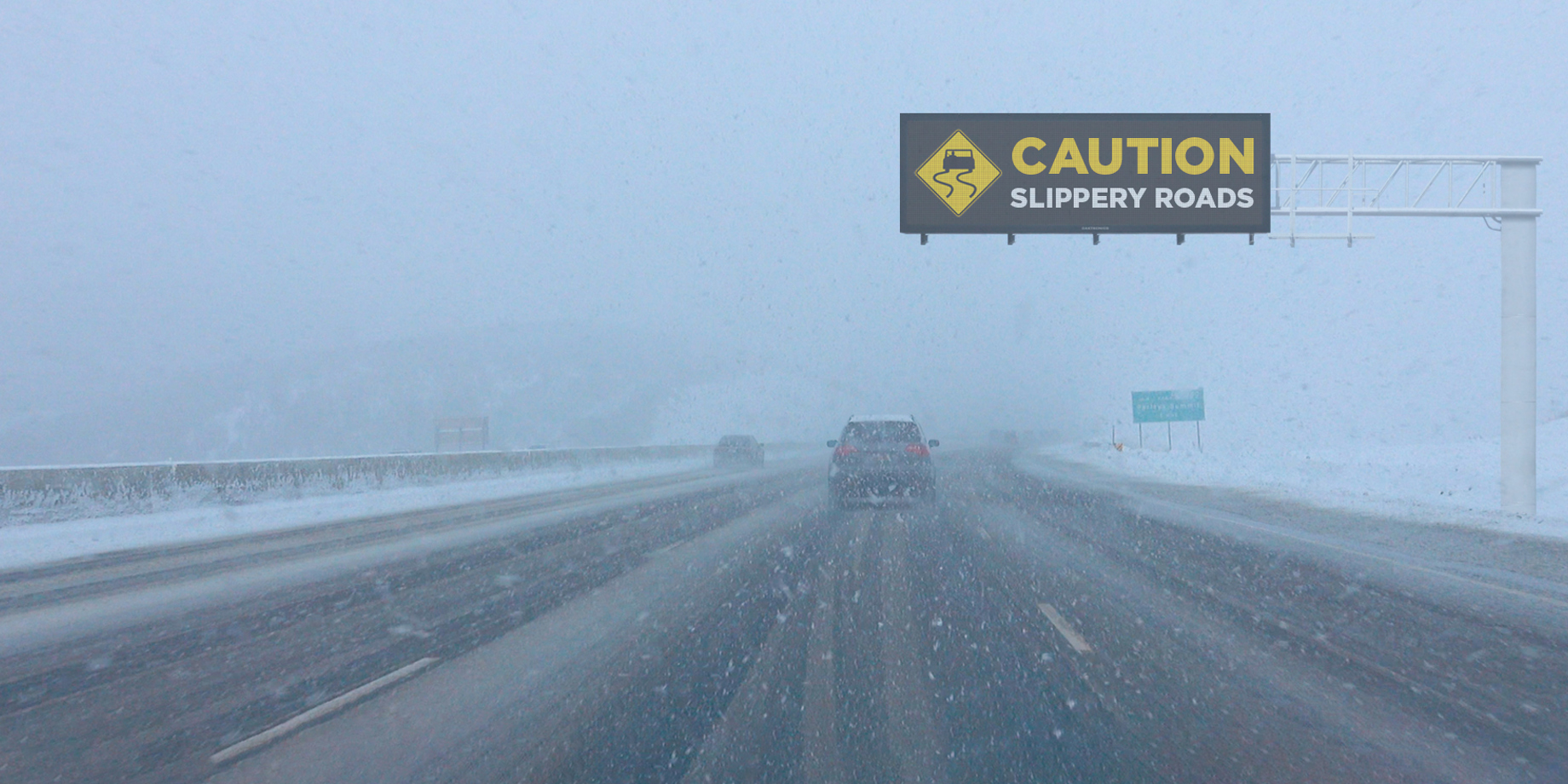Support from Above
There is a growing demand and need for infrastructure improvement, which leads to more innovation through technology. That includes dynamic message signs (DMS) on our roads and highways. As the government addresses infrastructure nationwide, communication on the roadways is more important than ever.
7/14/2021
Categories: Transportation

Daktronics has a 20+-year history of holding a voting seat on the Dynamic Message Sign Working Group of the National Transportation Communications for ITS Standards. This group is responsible for NTCIP 1203 v03, which ensures compatibility and interoperability dynamic message equipment from different manufacturers.
This team of manufacturers, transportation agencies and system designers collaborates to continually improve the standard to reflect rapid development of DMS technology, from simple amber readouts to full-color dynamic messaging. It also includes standard definitions for using graphics and colors on DMS signs.
NTCIP compliance ensures that agencies have the ability to expand their DMS systems. The DMS industry is deeply competitive, but in a constructive way. Like any governing body, the NTCIP DMS Working Group members put aside their differences to make compromises to move the industry in a positive direction.
The NTCIP 1203 includes standard definitions and protocols for using graphics and colors on LED displays. It covers how electronic traffic control equipment from different manufacturers cooperate with each other as a system, and how to use them to convey your messaging to the public. It includes a wide range of possibilities for transportation agencies to expand their full-color, full-matrix DMS systems with equipment from multiple manufacturers. Daktronics is particularly proud of this achievement because it is in the best interest of our current and potential ITS customers.

ITS Market Manager
jason.morrison@daktronics.com
“Use of such technologies for new CMS is encouraged for greater legibility of their displays and enhanced recognition of the messages as it pertains to the message as it pertains to regulatory, warning, or guidance information.”
-MUTCD 2L.04.13
In addition to communications, graphics, and colors, the NTCIP DMS Working Group continues to expand definitions for diagnostics reporting capabilities. What does this mean? Simply put, agencies can compare apples to apples when they check the status of their equipment, regardless of the manufacturer.
Finally, NTCIP 1203 contains key requirements for displaying content on full-matrix displays, including message “tags” which allow agencies to show text alongside graphics on different areas of the display. This offers key flexibility for DMS users to get the most out of their investment in the latest DMS technology.
If you have questions about the compliance of Daktronics products, please contact us. We can help you find the best future-proof solutions for your organization.
Found in translation
There are many multi-lingual areas of the country, so DOTS and other transportation agencies increasingly rely on symbols or graphics in conjunction with text rather than text-only signage. Using universal symbols lets agencies deliver recognizable messages to people who would otherwise have to translate text. DMS users should check the MUTCD (Manual Uniform Traffic Control Device) for guidance for the national standards of basic symbols and graphics to get their messages across.
A study from the Texas A&M University System in conjunction with the Texas Department of Transportation and the Federal Highway Administration confirms that both English and Spanish-speaking people show a great increase in comprehension when information is presented graphically.1
With more and more full-color dynamic message signs installed for clear communication, the MUTCD standard becomes more important than ever.
Chapter 2L of the MUTCD defines and provides guidelines for several DMS, or CMS (Changeable Message Signs) applications, including:
- Incident management and rout diversion
- Warning of adverse weather conditions
- Special event applications associated with traffic control or conditions
- Control at crossing situations
- Lane, ramp, and roadway control
- Priced or other types of managed lanes
- Travel times
- Warning situations
- Traffic regulations
- Speed control
- Destination guidance
Many of the MUTCD guidelines are for static signs, including specifications for background/foreground colors, symbol dimensions, visibility and overall size. Those same specifications generally apply to DMS/CMS signs as well, as you can see in Section 2L.04.17 of the MUTCD:
Some CMS that employ newer technologies have the capability to display an exact duplicate of a standard sign or other sign legend using standard symbols, the Standard Alphabets and letter forms, route shields, and other typical sign legend elements with no apparent loss of resolution or recognition to the road user when compared with a static version of the same sign legend. Such signs are of the full-matrix type and can typically display full-color legends. Use of such technologies for new CMS is encouraged for greater legibility of their displays and enhanced recognition of the message as it pertains to regulatory, warning, or guidance information.
- Ullman, Brooke R.; Trout, Nada D., and Dudek, Conrad L. Use of Graphics and Symbols on Dynamic Message Signs: Technical Report.Texas Transportation Institute, the Texas A&M University System. Published May 2009. https://static.tti.tamu.edu/tti.tamu.edu/documents/0-5256-1.pdf.
